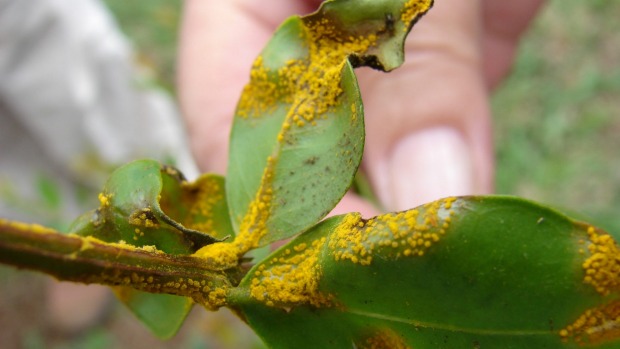A quick guide to Myrtle Rust
A deadly fungal disease that affects trees in the “myrtle” family has been discovered in New Zealand for the first time. But what is Myrtle Rust and how will it affect our native trees?
What is myrtle rust?
Myrtle Rust is a fungus that affects plants in the Myrtaceae or “myrtle” family. That includes some of New Zealand’s most iconic plant species including pōhutukawa, kānuka, mānuka and rātā and wetland dweller swamp maire.

What will it do to our native plant species?
It’s hard to say exactly how Myrtle Rust will affect our plants, but what we do know is that once it’s here, there’s nothing we can do and it has the potential to spread rapidly.
When it was first discovered in Australia in 2010, it spread very quickly from tropical Queensland to Tasmania in a single year with varying impacts. Some species and areas were affected very little, but some trees were killed entirely.
The fungus is known to attack new leaf growth and can kill plants when it becomes a severe enough infestation.
Where did it come from?
This type of Myrtle Rust (Puccinia psidii) is native to Brazil where there is a diverse range of myrtle trees for it to infect. But it has spread to many different countries, including Hawai’i and Australia.
Its spores are tiny – microscopic – and can spread across huge distances by wind. The most likely way it got to the mainland of New Zealand is by being carried on the westerly wind.
New Zealand’s first case of Myrtle Rust was found at a nursery in Kerikeri where five pohutakawa seedlings had yellow fungus on their leaves. The Ministry for Primary Industries sent samples for laboratory testing and has since confirmed that it is New Zealand’s first case of Myrtle Rust.
Can it be controlled?
There’s no known way to control Myrtle Rust in the wild. You can use fungicide in very small areas, but with New Zealand’s diverse native fungi species that are so crucial to the forest ecosystem, there’s no chance of doing a mass application.
What should you do if we find it?
If you think you’ve seen Myrtle Rust, don’t touch it! This will only increase the chance of it spreading. Take a photo, note your location as accurately as possible, and phone the Ministry for Primary Industries on 0800 80 99 66.
